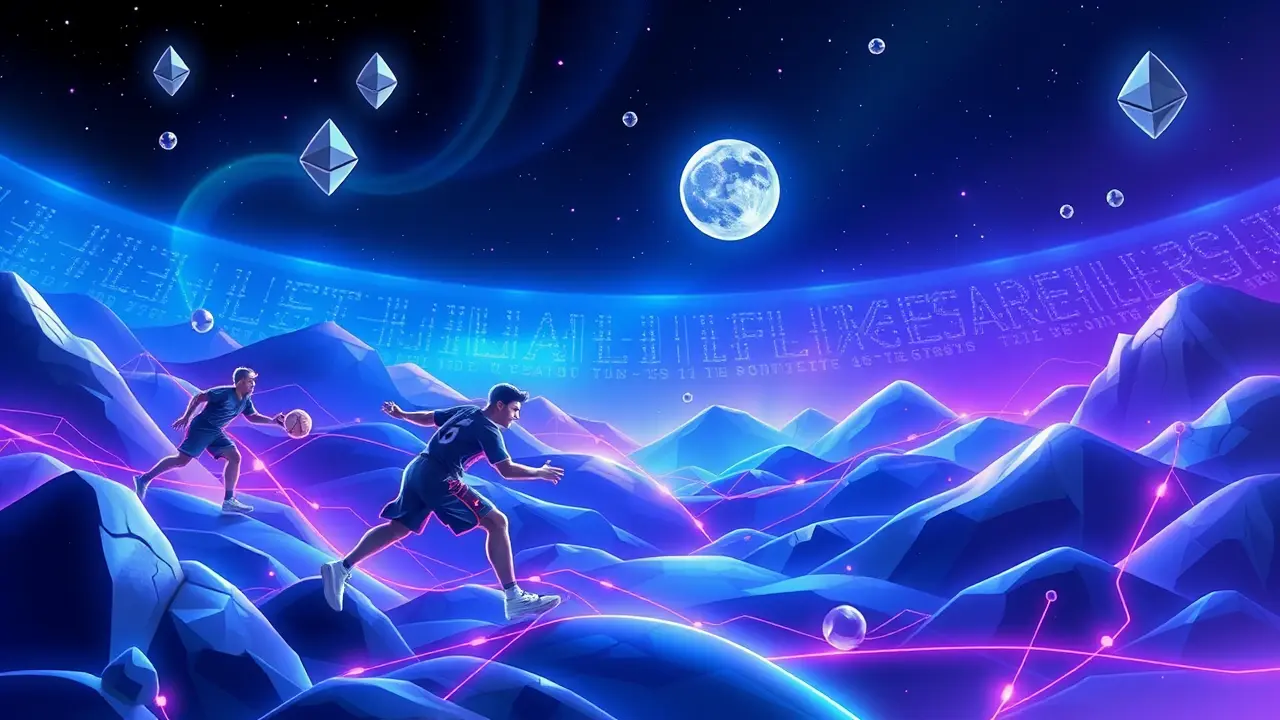Sorare Migrates to Solana, Abandoning Ethereum L2 StarkEx
In a move that has sent ripples through the crypto-collectibles space, Sorare, the premier blockchain-based fantasy sports platform, is executing a significant technological pivot, abandoning the Ethereum Layer 2 scaling solution StarkEx for a new home on the Solana blockchain. This isn't merely a backend switch; it's a profound strategic realignment that speaks volumes about the evolving battle for blockchain supremacy and the future of digital asset interoperability.Announced on October 8th, the migration was framed by Sorare as 'more than a technical upgrade,' positioning it as a crucial leap toward their ambition of building the most open and flexible platform for digital sports collectibles. For those deeply embedded in the Ethereum ecosystem, this decision is particularly striking.StarkEx, developed by StarkWare, has been a cornerstone of Ethereum's scaling narrative, using zero-knowledge roll-up technology to batch transactions off-chain and settle proofs on the mainnet, thereby reducing gas fees and increasing throughput. It was a logical choice for a game like Sorare, which involves frequent, low-value transactions for card trading and game play.To leave this specialized, Ethereum-aligned environment for a competing Layer 1 like Solana suggests that the benefits of Ethereum's security and decentralization are being weighed against other, more pressing needs for mass adoption. The rationale, as detailed in Sorare's migration FAQ, is unequivocally ecosystem-driven.The team explicitly stated the move is designed to connect Sorare cards 'to a broader ecosystem,' a clear nod to Solana's thriving and deeply integrated NFT and DeFi landscape. This means users will soon manage their prized digital athlete cards—previously confined within Sorare's walled garden on StarkEx—using popular and user-friendly Solana wallets like Phantom and Solflare.This single change dramatically enhances the utility and liquidity of these assets, allowing them to be seamlessly used across thousands of Solana-based applications, from decentralized exchanges like Raydium and Orca for fractional trading to NFT marketplaces like Magic Eden and Tensor for peer-to-peer sales, and even staked within complex DeFi yield-farming strategies. This interoperability is a killer feature that StarkEx, for all its technical elegance, could not easily provide in isolation.Furthermore, the migration opens the door to a long-anticipated development: a native Sorare ecosystem token. On Solana, with its high-throughput and low-cost environment, launching and managing a governance and utility token becomes exponentially more feasible.Imagine a future where users can earn token rewards for winning fantasy leagues, use tokens to purchase exclusive card packs, or participate in decentralized autonomous organization (DAO) votes to shape the game's future—all without the prohibitive gas fees that have often plagued similar initiatives on Ethereum during periods of high congestion. This vision aligns perfectly with the core Web3 ethos of community ownership and participation, a principle that Vitalik Buterin himself has consistently championed.However, this strategic shift is not without its risks and critics. Solana, while boasting impressive technical specifications, has faced its own challenges, most notably a series of network outages that have raised questions about its reliability and decentralization compared to the battle-tested security of Ethereum.Migrating a platform with Sorare's user base and transaction volume is a monumental engineering undertaking, fraught with potential for bugs, lost assets, or user confusion during the transition period. There is also the cultural consideration; a portion of Sorare's user base are Ethereum maximalists who value the chain's security guarantees above all else, and convincing them of Solana's long-term viability will be a key hurdle.From a broader industry perspective, Sorare's defection is a significant coup for Solana in its ongoing competition with Ethereum. It signals to other large-scale projects that Solana is a viable, and perhaps superior, platform for applications requiring high-frequency, low-cost transactions and deep composability.This could trigger a wave of similar migrations, further accelerating the 'multi-chain' narrative where applications choose their blockchain home based on specific functional requirements rather than ideological allegiance. It also puts pressure on the Ethereum ecosystem to deliver on the promise of its own upcoming upgrades, like Proto-Danksharding in EIP-4844, which aims to drastically reduce Layer 2 costs.In essence, Sorare's journey from Ethereum to a dedicated Layer 2 and now to Solana mirrors the maturation of the entire Web3 industry. We are moving beyond the era of technological experimentation and into a phase of strategic optimization, where user experience, ecosystem depth, and economic feasibility are the paramount concerns.This move is a bold bet on a future where digital collectibles are not static JPEGs in a siloed app, but dynamic, liquid, and programmable assets at the heart of a vast, interconnected digital economy. The success or failure of this migration will be a case study watched closely by every project building at the intersection of gaming, finance, and digital ownership.
It’s quiet here...Start the conversation by leaving the first comment.
© 2025 Outpoll Service LTD. All rights reserved.
